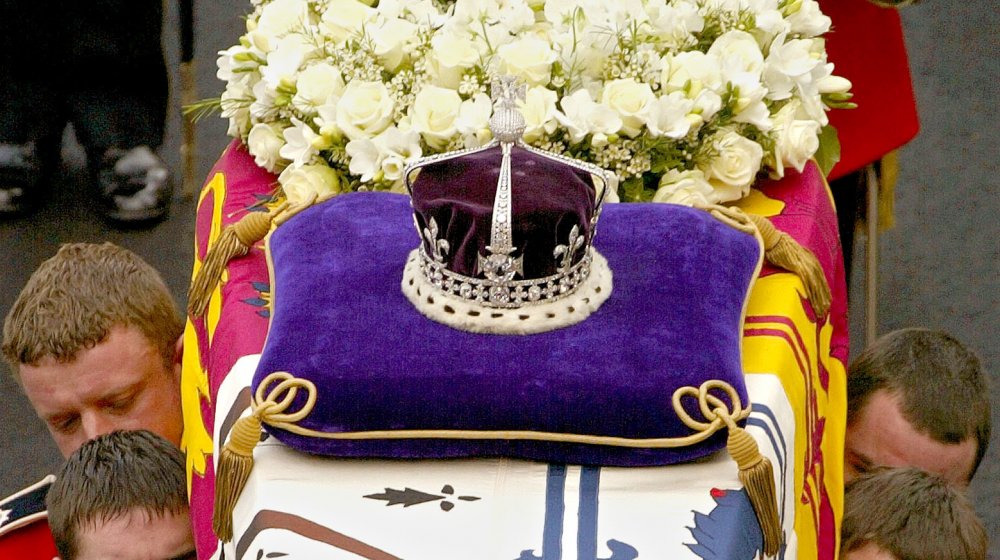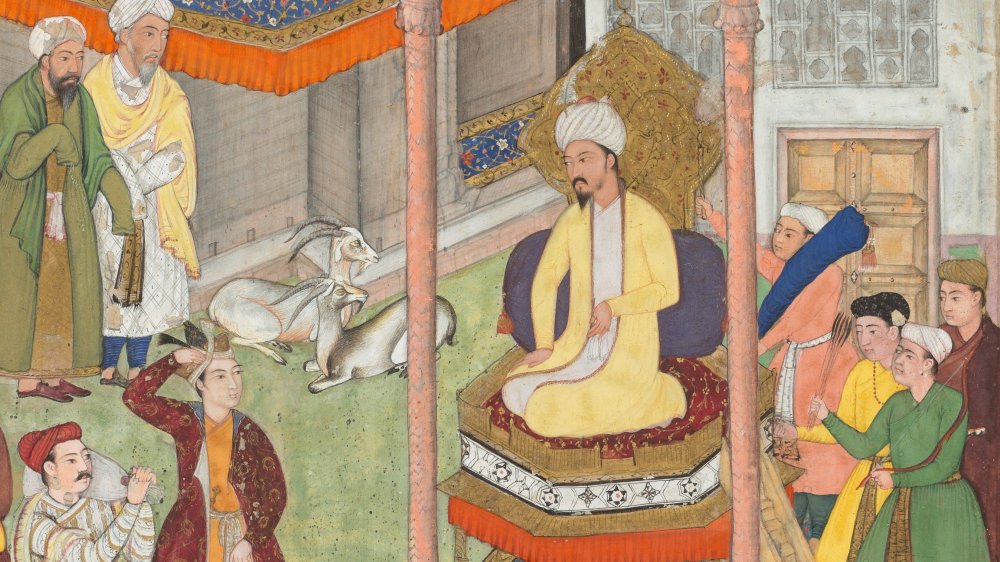The Crazy True Story Of The World's Most Infamous Diamond
Set in the middle of the crown of England's Queen Mother is a large, brilliant, clear diamond. Called the Koh-I-Noor, it's a prized gem among the British crown jewels. But it holds a secret. The Koh-I-Noor may be one of the largest diamonds in the world, but it is also one of the most cursed.
The Koh-I-Noor diamond first arrived in the UK in the 19th century after Lord Dalhousie, the governor-general of India, sent the stone as a gift to Queen Victoria, the BBC reports. The queen displayed the diamond as part of the Great Exhibition in London and then had it recut. Even before traveling across the seas, the Koh-I-Noor already had a colorful history. According to The Independent, only female members of the Royal Family can wear the diamond. After all, much like another famous diamond, the Koh-I-Noor gained the reputation of cursing any men that dared own it.
According to The Independent, the Mughals of India first owned the Koh-I-Noor and were also its first victims. The Mughal Emperor Babur saw his son driven into exile. The next owner was Shah Jahan, the emperor who built the Taj Mahal. He put the diamond into his throne but spent his last days staring at it from prison. The Smithsonian Magazine writes the diamond spent most of its history away from India after it was looted by Persian kings, before being returned to India.
It's kept in the Tower of London, but India wants it back
When India came under British rule, its officials made the last Punjabi emperor sign away his rights to the Koh-I-Noor. The emperor was just 10 years old, explains The Smithsonian Magazine. With the jewel in hand, it was sent to England and cut to almost half its size. Queen Victoria first wore it as a brooch, but then had it placed in a crown. The crown was then passed down to female members of the Royal Family.
The diamond has been proudly worn by British royals. It was even displayed on the Queen Mother's casket during her funeral. But the Koh-I-Noor still causes controversy. Like many historical items taken by colonizers, the British took part of India's history away and India wants it back. The Independent reports the Indian government demanded the stone be returned in 2005. Pakistan also laid claim to the gem decades earlier. The British government refused both countries, stating the Koh-I-Noor was not stolen but rather handed over to the UK by the Punjabi emperor in gratitude for their help in defeating the Sikhs.
It is unlikely the Koh-I-Noor will ever be removed from the British crown jewels, just as it's unlikely India and Pakistan will stop demanding its return. Such is the fate of historical objects taken from countries that were colonized. Perhaps it's cursed after all.

